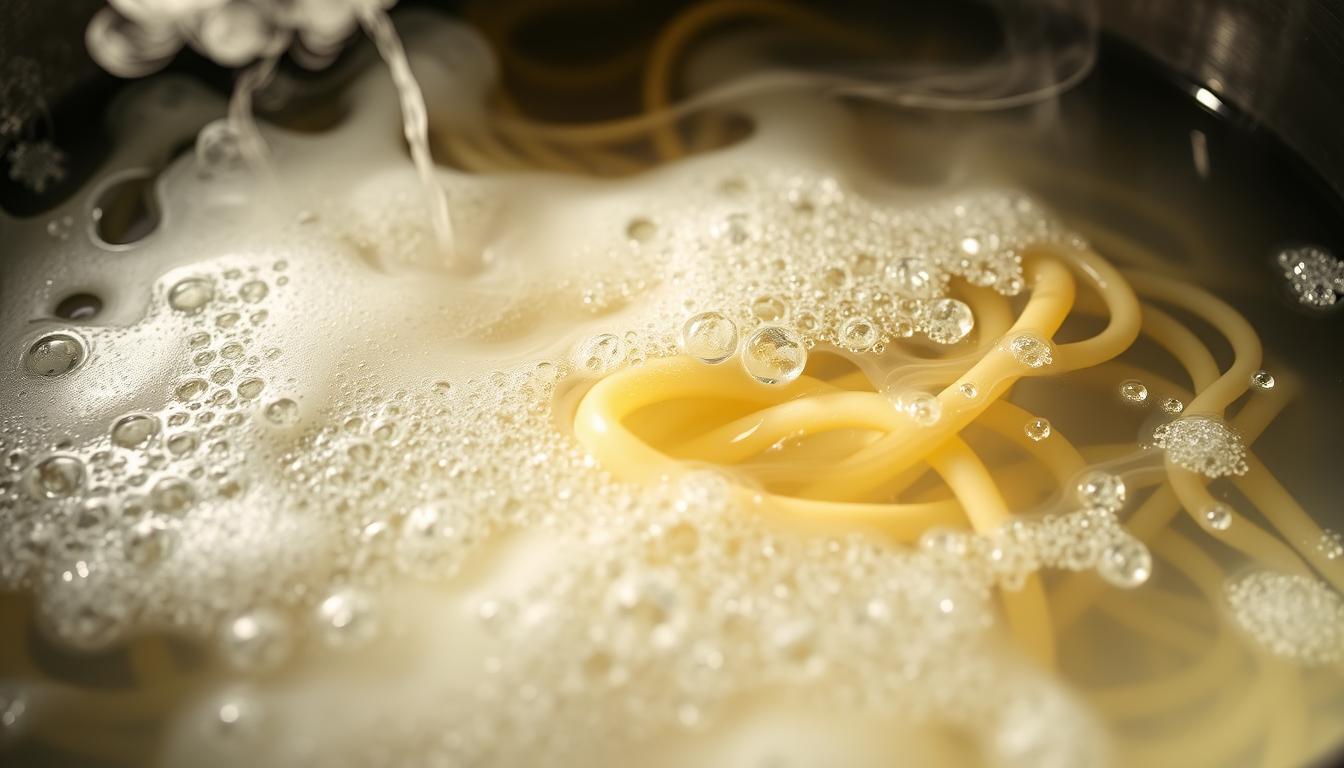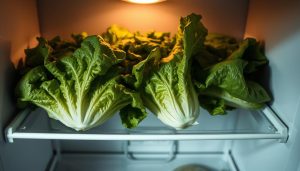While 4 out of 5 Americans discard their boiled noodle liquid, professional kitchens treat it like culinary treasure. This cloudy broth becomes a powerhouse ingredient through natural chemistry. As grains simmer, they release invisible compounds that transform ordinary H₂O into a versatile kitchen ally.
The magic happens when heated water interacts with surface proteins. This reaction creates a viscous solution perfect for binding ingredients. Unlike plain tap water, this enriched liquid helps sauces coat every strand evenly. It’s why Italian grandmothers always save a cup before draining their pots.
Top chefs rely on this resource for achieving velvety textures in plant-based dishes. The dissolved particles act as natural thickeners, reducing reliance on heavy creams or artificial additives. When added gradually, it helps emulsify oil-based dressings into smooth coatings.
Key Takeaways
- Transforms sauces through natural thickening properties
- Creates professional-quality textures without additives
- Enhances flavor distribution across ingredients
- Reduces food waste through smart reuse
- Works as emulsifier for oil-based dressings
Your next pasta dish could gain Michelin-star qualities through this simple technique. The key lies in timing – capture the liquid when it reaches optimal starch concentration. Later sections reveal how to identify this golden moment and apply it across various recipes.
Exploring the Benefits of Pasta Water in Your Recipes

This humble byproduct of boiling noodles holds secrets to elevating everyday meals. When reserved instead of discarded, it becomes a multi-purpose kitchen asset that enhances both taste and texture across various dishes.
Nutritional and Flavor Enhancements
Swap plain broth in soups with this starchy liquid for instant richness. Its natural thickening power creates velvety textures in minestrone or tomato bisque without heavy creams. Bakers achieve fluffier bread by substituting 25% of regular H₂O in dough recipes – the dissolved particles improve crumb structure and crust shine.
Transform legumes into creamy masterpieces by simmering beans or lentils in reserved cooking liquid. The starch acts like a flavor conductor, helping spices cling to each bite. Even vinaigrettes gain cohesion when whisked with a splash of this versatile ingredient.
Sustainable Cooking Practices
Reducing food waste becomes effortless when repurposing this resource. Feed sourdough starters with cooled liquid to accelerate fermentation – wild yeast thrives on the residual carbohydrates. Store excess in ice cube trays for future sauce adjustments or soup bases.
Chefs maximize every drop by freezing portions for up to three months. Thawed cubes revive roasted vegetable purees or pan sauces with restaurant-quality consistency. Your kitchen efficiency grows as you unlock seven uses for what once went down the drain.
The Science Behind Pasta Water and Starch
Cheese sauces achieve their velvety perfection through precise molecular teamwork. When heated dairy meets starchy liquid, invisible bonds form that dictate your sauce’s success or failure.
How Starch Interacts with Cheese Proteins
Melted cheese contains proteins that naturally clump when agitated. Starch creates a protective shield around these proteins during heating. This barrier stops them from forming rubbery masses – the secret behind smooth cacio e pepe.

The Role of Temperature and Heat in Consistency
Keep your burner below 149°F (65°C) for stable protein behavior. Exceed this threshold, and you’ll need increased starch concentrations to maintain texture. Professional kitchens use this thermal sweet spot to create sauces that coat noodles evenly without separation.
Understanding the Impact of Salt and Other Ingredients
Salt enhances starch’s water-binding capacity by 18-22% in typical recipes. A 2-3% starch-to-cheese ratio provides optimal protection against clumping, while black pepper particles help distribute heat evenly through the mixture.
Higher starch content (above 3%) gives more temperature flexibility – perfect for multi-tasking cooks. This buffer prevents the dreaded “mozzarella phase” where cheese forms unworkable clumps. Your sauce stays creamy whether you’re simmering or reheating.
Why Pasta Water Matters: Starch Science
The secret to velvety sauces isn’t just in the ingredients but in the liquid you might be throwing away. Professional kitchens leverage this resource through precise methods that transform ordinary meals into extraordinary experiences.
Techniques for Achieving a Smooth, Creamy Sauce
Start with a 1:10 ratio of powdered starch to salt pasta water for foolproof emulsification. Heat the mixture to 158°F (70°C) until it becomes translucent – this activates the thickening power without compromising flavor. “The magic happens when starch molecules unwind and trap moisture,” explains a Michelin-starred chef.
Cool your starch solution before adding grated cheese. For 200g of Pecorino Romano, blend gradually to create a glossy coating that clings to noodles. This process prevents the proteins from seizing up, ensuring sauce stays silky rather than grainy.
Controlling Texture and Consistency in Your Dishes
Let cooked noodles rest 90 seconds before saucing. This cooling period reduces surface heat that could break delicate emulsions. Use reserved starchy water like a sculptor’s tool – add teaspoon by teaspoon until achieving your desired cling factor.
For error correction, keep a starch slurry (1 tbsp cornstarch + 2 tbsp water) nearby. If sauces thicken too much during reheating, a splash of salt pasta water restores balance without diluting flavor. Your consistency control becomes as precise as a pastry chef’s thermometer.
Remember: traditional methods using only boiled liquid work best when paired with quick-cooking shapes. For thicker sauces or baked dishes, supplement with extra starch. This hybrid approach guarantees restaurant-quality results in home kitchens.
Conclusion
Transforming your cooking starts with one simple shift—viewing that cloudy liquid as a secret weapon rather than waste. Store it chilled for three days or frozen for months, ready to elevate everything from dough to legumes. Replace regular water in bread recipes to boost crumb structure, or stir it into soups for instant richness without cream.
This resource becomes your ally for flavor enhancement and texture control. A splash revives sauces, while frozen cubes simplify future meal prep. Bakers gain softer loaves, and simmered beans turn luxuriously creamy—all through natural starch chemistry.
Your kitchen efficiency grows as you reduce waste and master multitasking. Keep salt pasta water handy to correct sauce consistency or accelerate sourdough starters. Each reuse strengthens sustainable habits while delivering professional results.
With these techniques, ordinary ingredients achieve extraordinary depth. Embrace the science behind that murky liquid, and watch simple dishes transform into culinary triumphs.



